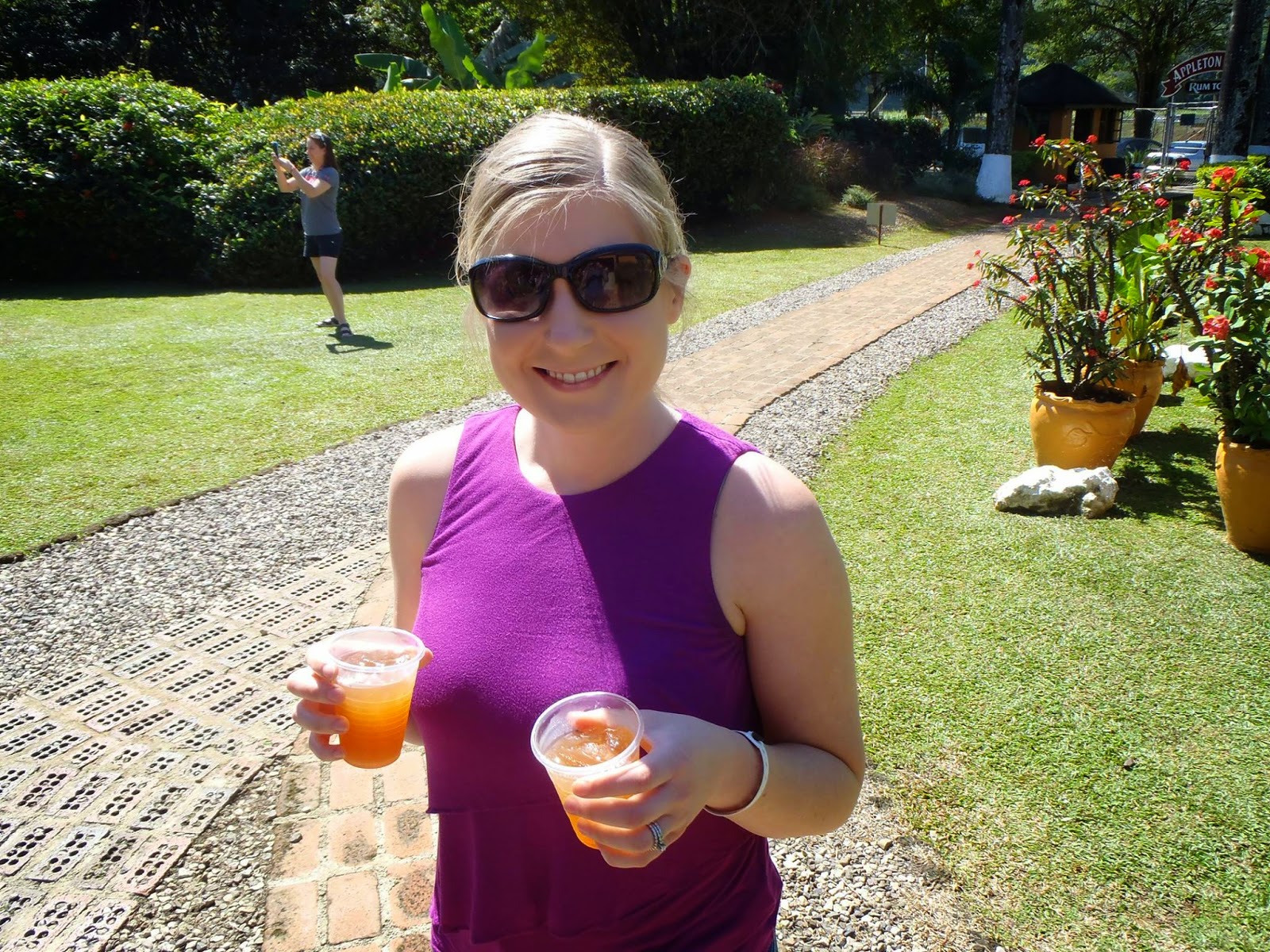January 1-April 30 still had me busily exploring the world of wine. Some highlights included starting up a tasting group with fellow wine lovers in the late winter/early spring, visiting Jamaica's Appleton Estate Rum Distillery in February and attending a few local tasting events that focused on great value wines. I also made it back to the Okanagan in August and did some wine touring - thank goodness for spit buckets!
Even with only 4 months of official tasting, I was able to put together a list of wines and pairings that stood out to me during the year. Here are my top wine picks of 2015!
Top Red Wines
Because my drinkable months occurred during the winter, my top picks favour red wines this year. In fact, there were very few red wines I didn't enjoy in the first 3 months of 2015! The top two wines are priced in the premium category, while the other 3 are priced between $20 and $35 CDN.
1. Burrowing Owl Meritage 2011 - Oliver, British Columbia, Canada
2. Joseph Phelps Insignia 1996 - Napa, California
3. Dominio de Tares Baltos Mencia 2011 - Bierzo, Spain
4. Silkscarf Malbec Cabernet 2009 - Summerland, British Columbia, Canada
5. Tiefenbrunner Pinot Noir Turmhof 2012 - Alto Adige, Italy
Top White Wines
Spain took the top 1 and 3 spots and French whites, including a Premier Cru, took 2nd and 4th place. All wines are priced under $40 CDN with the exception of the Burgundy, which is premium priced.
1. Bodegas Muga Blanco 2011 - Rioja, Spain
2. Domaine Bouchard Pere et Fils Meursault 1er Cru Genevrieres 2000 - Burgundy, France
3. Bodegas Exopto Horizonte de Exopto 2012 - Rioja, Spain
4. Domaine Fouassier Les Romains 2012 - Sancerre, Loire Valley, France
Because of my shortened "tasting season" this year, I wasn't able to spend as much time with sweet wines, sparkling wines or rose wines and will therefore not be adding these categories to my list this year. However, I did get to experiment with wine and food a fair bit, and here are my top picks for pairings.
Top Wine and Food Pairings
1. Pfaffenheim Gewurztraminer 2013 with Seafood Salad "Louis Style", served in Lettuce Boats
2. Domino Pinot Grigio 2012 with Honey-Lime Marinated Shrimp (v)
3. Tommasi Poggio al Tufo Rompicollo 2011 with Slow-Cooked BBQ Ribs (v)
Honourable Mention; Cameron Hughes Della Robbia semi-sweet Italian Rosso with Wagon Wheels (v)
*Don't knock this pairing until you try it! This pairing is great for camping!
Three of my top wines in the food pairing category happen to be value wines at under $20 per bottle, so my Top Values list is shortened to include the wines mentioned above. Australian Shirazes dominate the list, with a semi-sweet Tokaji clinching 3rd spot and a New Zealand Sauvignon Blanc rounding out the category.
Top Values
1. Wynn's Coonawarra Estate Cab Shiraz Merlot 2010 - Coonawarra, Australia
2. M Chapoutier Domaine Tournon "Mathilda" Shiraz 2010 - Victoria, Australia
3. Crown Estates Tokaji Sargamuskotaly semi-sweet 2011 - Hungary
4. Seven Terraces Sauvignon Blanc 2013 - Marlborough, New Zealand
This year I'm going to introduce 2 new categories: Top Spirits and Top Beers. You might be surprised at the number of Canadian spirits & beers on each list, but in my opinion Canada is really starting to make their mark on the world of spirits, especially in the world of Whisky. The top beers are courtesy of my husband, who tasted approximately 100 beers in 2015!
Top Spirits
1. Appleton Estate Rare Blend 12 Year Old Rum - St Elizabeth Parrish, Jamaica
2. Crown Royal Northern Harvest Rye - Gimli, Manitoba, Canada
3. Eau Claire Distillery Three Point Vodka - Turner Valley, Alberta, Calgary
Top Beers
1. Phillips Longboat Chocolate Porter - Victoria, BC, Canada
2. Ayinger Celebrator Doppelbock - Germany
3. Delerium Tremens - Belgium
4. Granville Island Lions Winter Ale - Vancouver, BC, Canada
5. Erdinger Dunkel - Germany
So what's next for 2016?
I plan to return to wine school through Fine Vintage Ltd and take their Canadian Wine Scholar Certification course in late 2016/early 2017. Therefore, my main focus will be on Canadian wines. Our major trip this year will be back to the Okanagan, where I will sample my way through the region and soak up as much knowledge as I can to study and prepare for the course. I am also hoping to spend some time in the Niagara region, should we make it back to my parents' place in Ontario.
Other regions I plan to focus on include Champagne, California, Italian food and wine pairings and Rioja, Spain.
Huge thanks to all those who still follow me despite my long absence from the blog and twitter! May you have a 2016 filled with good food, good friends and great wine. Cheers!















